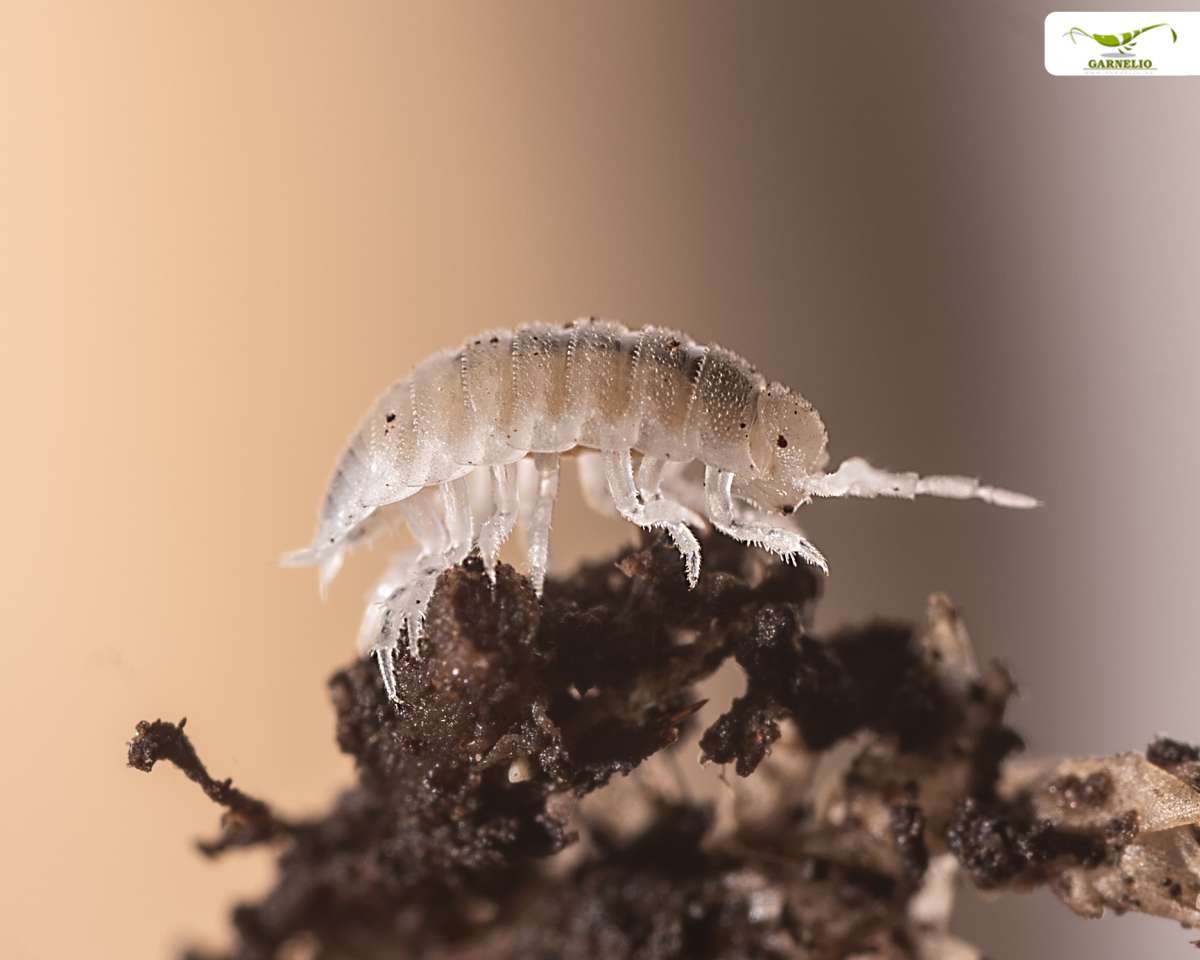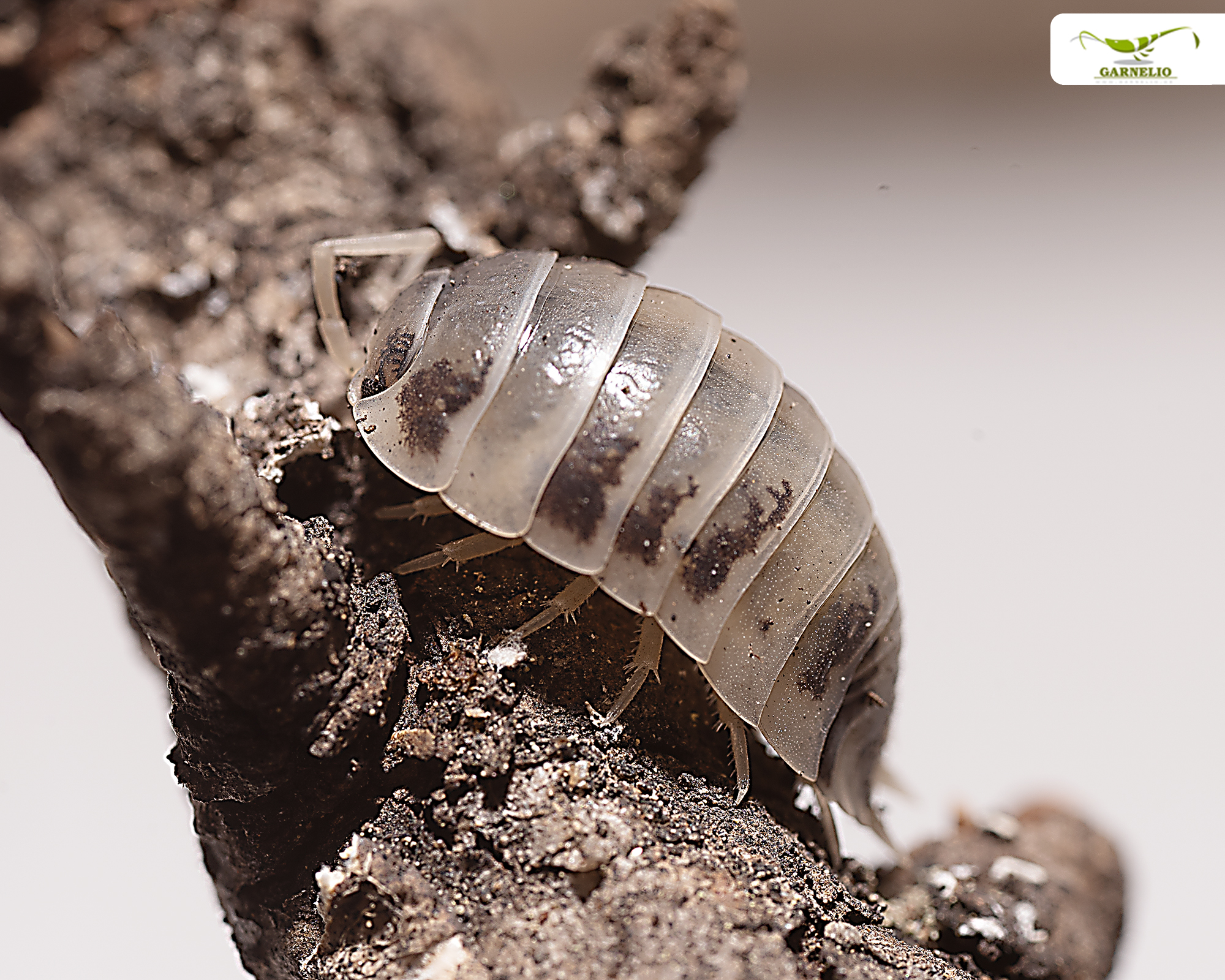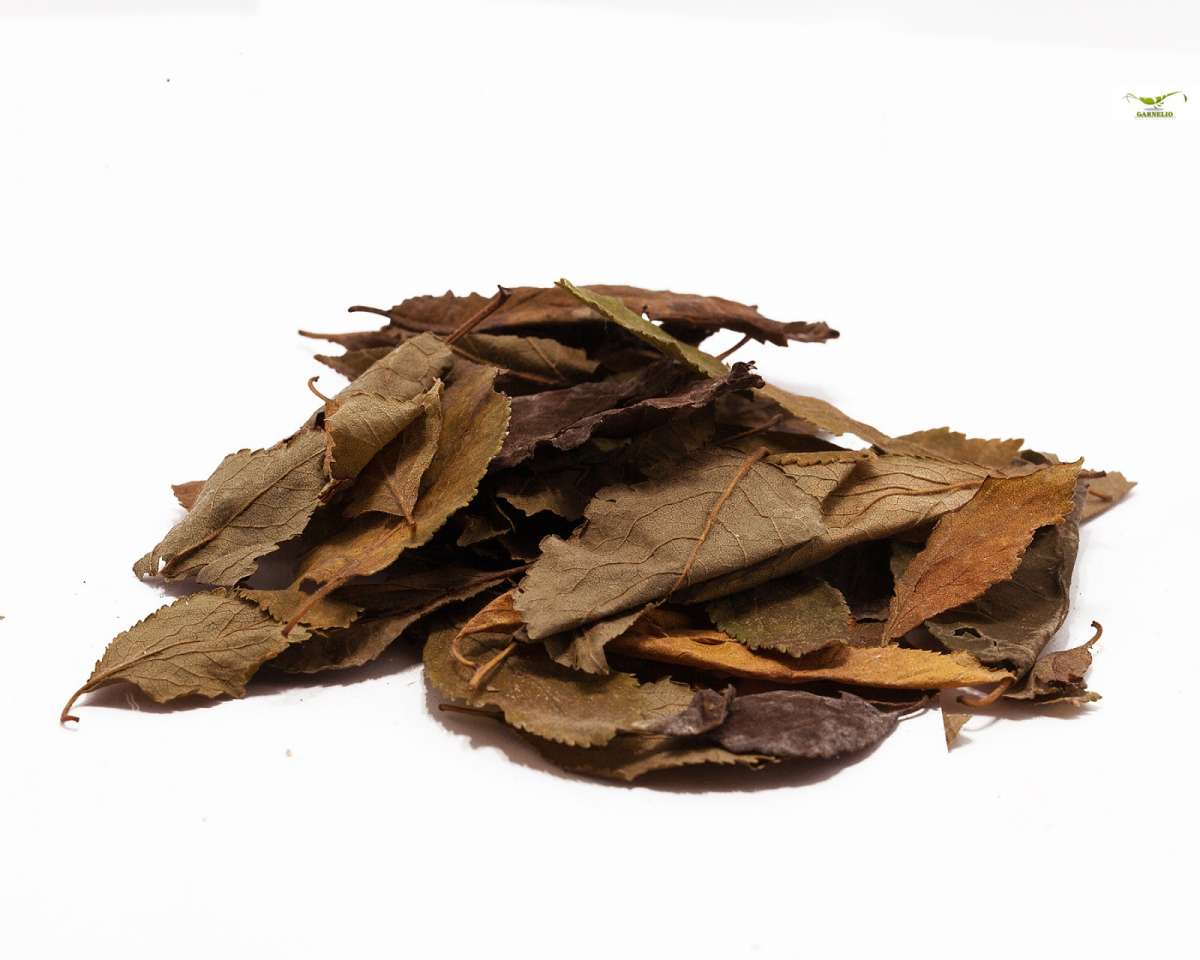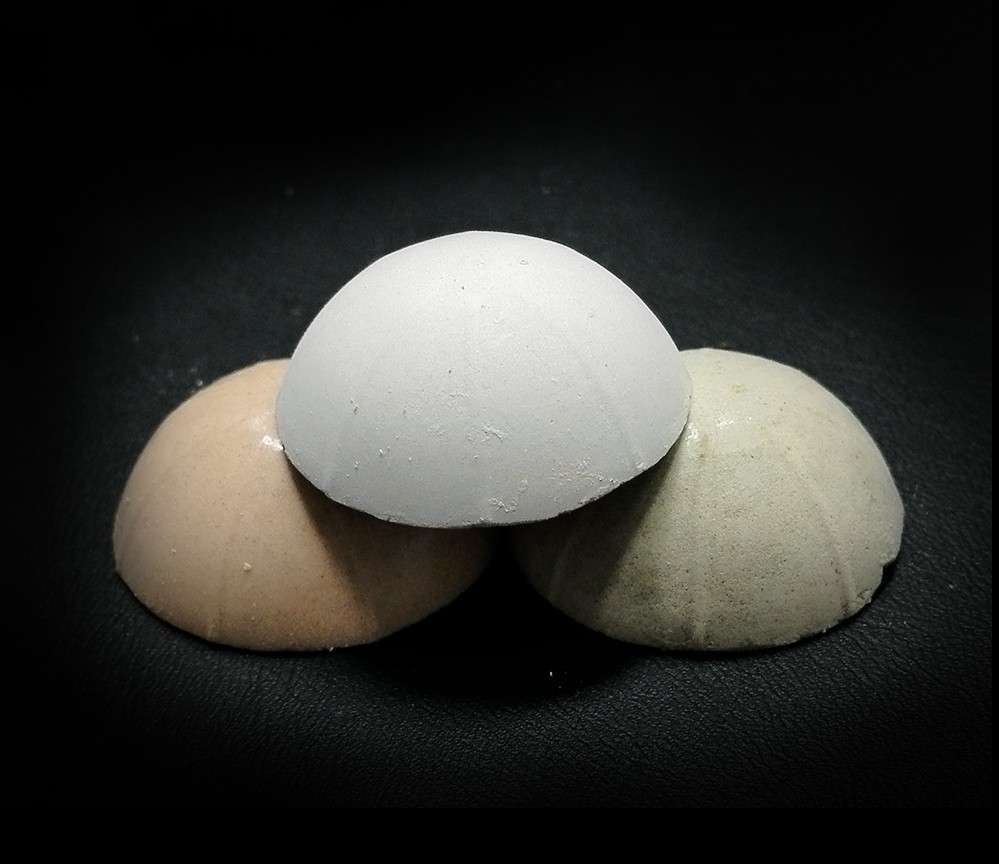Fascination landlubber - from cosmopolite to pet
Table of contents
- Who is crawling there?
- Under the magnifying glass: popular isopod species in terraristics
- Full in isopod flow
- Feeding isopods
- Last but not least
Of all the creepy-crawlies found on earth, the isopod is one of the very few that, with the exception of Antarctica, occurs worldwide. What's more, the isopod is one that originated in the sea, yet lives on land. So it is no wonder that it fascinates, because it is one of the higher crustaceans, which also have gills, although externally it would have a little more resemblance to a beetle. As one of the oldest known animals at all, fossil isopods have already been estimated to be more than 50 million years old. In total, there are about 10,000 known isopod species with nearly 120 families, which are placed in 10 suborders. Among them there are species that are just a few millimeters up to almost half a meter in size - the latter, however, are mainly found in the deep sea, others are native to fresh and ground water, surface waters, but also coastal waters. There are also parasitic species that mainly use fish as hosts.
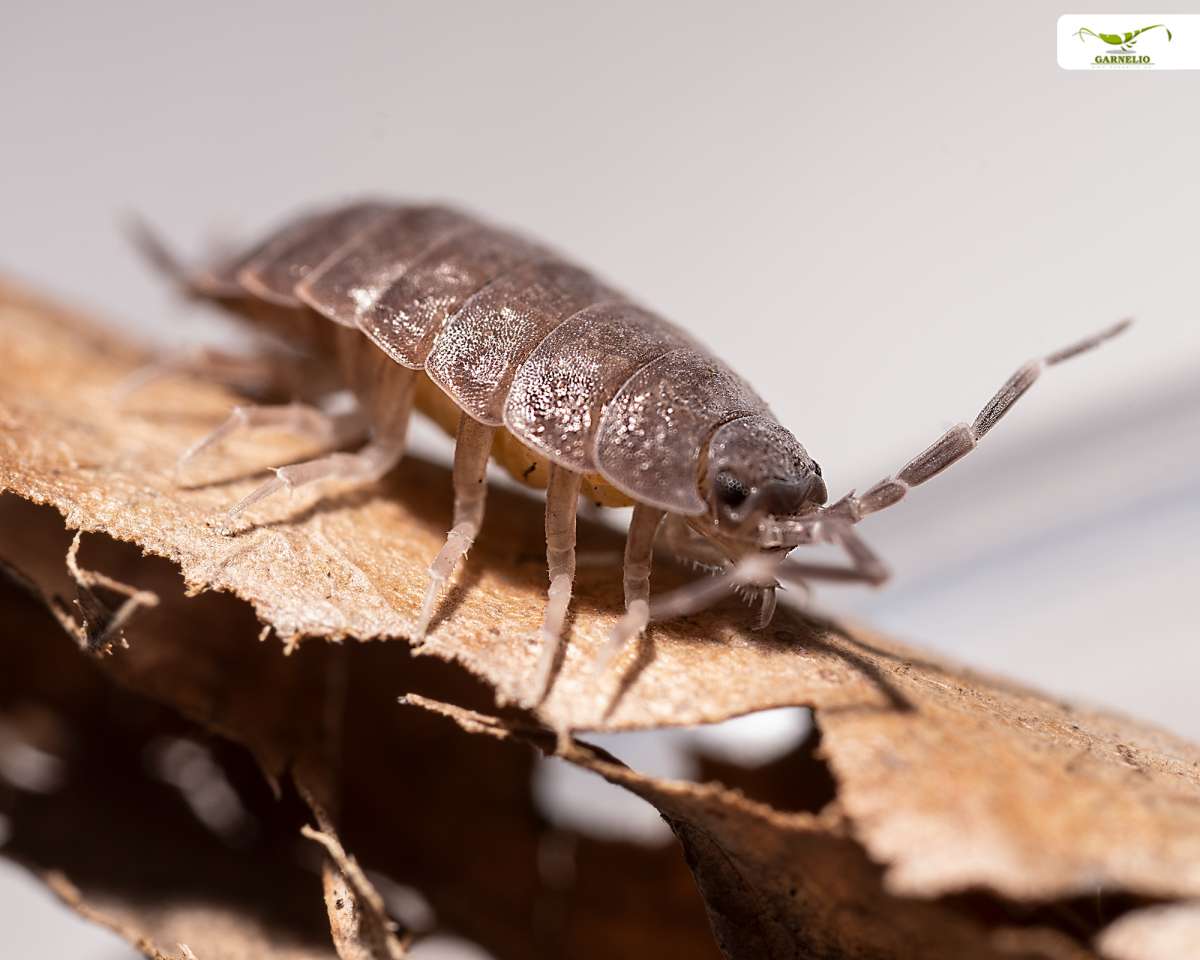
Who's crawling?
Woodlice have an incredible adaptability that has evolved over millions of years. In addition to a body that is flattened from the back to the abdomen, they have seven pairs of legs and body limbs, with the gills located on the back legs. Due to external influences, some species have even developed respiratory organs such as tracheae and lungs, making them perfectly adapted to life on land. Females have a brood pouch under their body where their young develop. The reproductive cycle can begin when some species are as young as 3 months old, during which they incubate up to 100 young. As gill breathers, isopods need to keep their gills constantly moist, which is why they prefer to live in unreal environments that are rather uninteresting to humans. So it's time to shine a light into the darkness and thus take a look at these fascinating animals, which until now have caused rather unease and perhaps even disgust:
Woodlice are the first to appear when something needs to be cleared away; and in doing so, they colonize the uppermost layers of soil up to several centimeters deep in a moist and slightly warmed environment, with only one thing on their mind: eating. Their Latin name Porcellio scaber, by the way, is derived from "unclean, mangy piglet" and, on closer inspection, no species name is probably more appropriate than this. This useful little pig is one of the most important deputy sheriffs in the general material cycle on our planet: Whether dead roots, whole trees, plants or carrion, even molds and feces - even their own - are recycled by them and thus reintegrated into the ecosystem. Interestingly, they can even distinguish different types of bacteria and adapt their immune system to the respective situation and even ramp it up to a maximum; for such lowly animals this is a real revolution! Thus, terrestrial isopods are true miracle animals that can absorb and even store an abundance of nutrients with their insatiable appetite. Unlike other crustaceans, they can even store up to forty times the amount of calcium, which they need, among other things, for their own shell formation, but they can also store other trace elements and minerals such as iron, chromium, cadmium, copper and zinc in higher quantities. Perhaps also special is the fact that they are absolute energy savers: because instead of producing urine and laboriously converting it into ammonia, they simply exhale it through their exoskeleton.
Under the magnifying glass: popular isopod species in terraristics
Especially in the terrarium the White isopod, Trichorhina tomentosa, has long been known as the ground police. While this creepy-crawly is far smaller than other species at just 5 mm and not quite as easy to observe with the naked eye, their grooming service is all the greater for it. Like their relatives, they tirelessly consume the remains of the terrarium inhabitants, from food remnants to excrement, thus preventing unwanted co-inhabitants such as mold from gaining access. Since they also prefer more humidity than other species, they adapt well to a life in the terrarium community; especially in dendrobat terrariums they get along wonderfully and reproduce well. Ultimately, they serve here not only as a cleaning column, but finally and finally as a snack for example poison dart frogs, toads and other quakers. But also kept and cared for in a breeding box, the white isopod cuts a really good figure: especially children can observe them great with a magnifying glass and also microscopy. The isopods are great study animals, which wonderfully meet and satisfy the exploratory and discovery urge of our youngest (and maybe even a little bit of our own). At an average temperature between 18-25 °C white isopods can be kept very well.
With their black and white spotted appearance the Panda Assel porcellio laevis, reminds at first sight of a cow. Or a panda. Or even a Dalmatian. For this reason, this coveted crawling animal has many different names, from Dalmatian ass to Panda ass, it is also called "Dairy Cow". The Panda Assel grows to about 2.3-2.5 cm in size, making it ideal for the snouts of medium-sized reptiles, such as geckos and bearded dragons. The Panda Assel has, as you would expect, also a lot of fans, who keep it as a pet just because of its appearance and the absolute easy care. These diurnal animals can be observed very well, because they work tirelessly all day long. Above all, they reproduce rapidly and can even be crossed with other colors, so that you can breed great color variations out of them - maybe the focus is on snow-white or raven-black animals, maybe also on those that only carry three spots on their back carapace? The color breeding is one of the interesting features of the Panda Assel. At the age of about 8 months they already reproduce and can hardly be stopped. Due to their extremely good compatibility with very high humidity they can even be kept in a snail terrarium. At a temperature between 18-26 °C the pandas can be maintained optimally.
Cuban isopods, Porcellionides pruinosus, exist meanwhile in several color forms. The gray form corresponds to the nominate form, which orange isopod is rather rare in the wild. It, too, is a daylight tolerant candidate, and its striking color makes it especially well suited for heavy-feeding and fussy terrarium favorites. With their possible final size of about only 1.2 cm, Cuban isopods are excellent for small to medium-sized reptiles. Especially frogs can resist the special orange color shape only badly. In the terrarium they take over, according to their kind a large part of the clearing up work and serve still in addition as useful living food, which is available as "permanent chewers" quasi constantly. Especially in the foliage they are often found and nibble it down to the leaf stalks and the skeleton. At a constant temperature of 25 °C their reproduction rate is highest. However, they can be kept at 23-26 °C as well. Especially with a constant supply of food, the crawlers grow up quickly and multiply in no time.
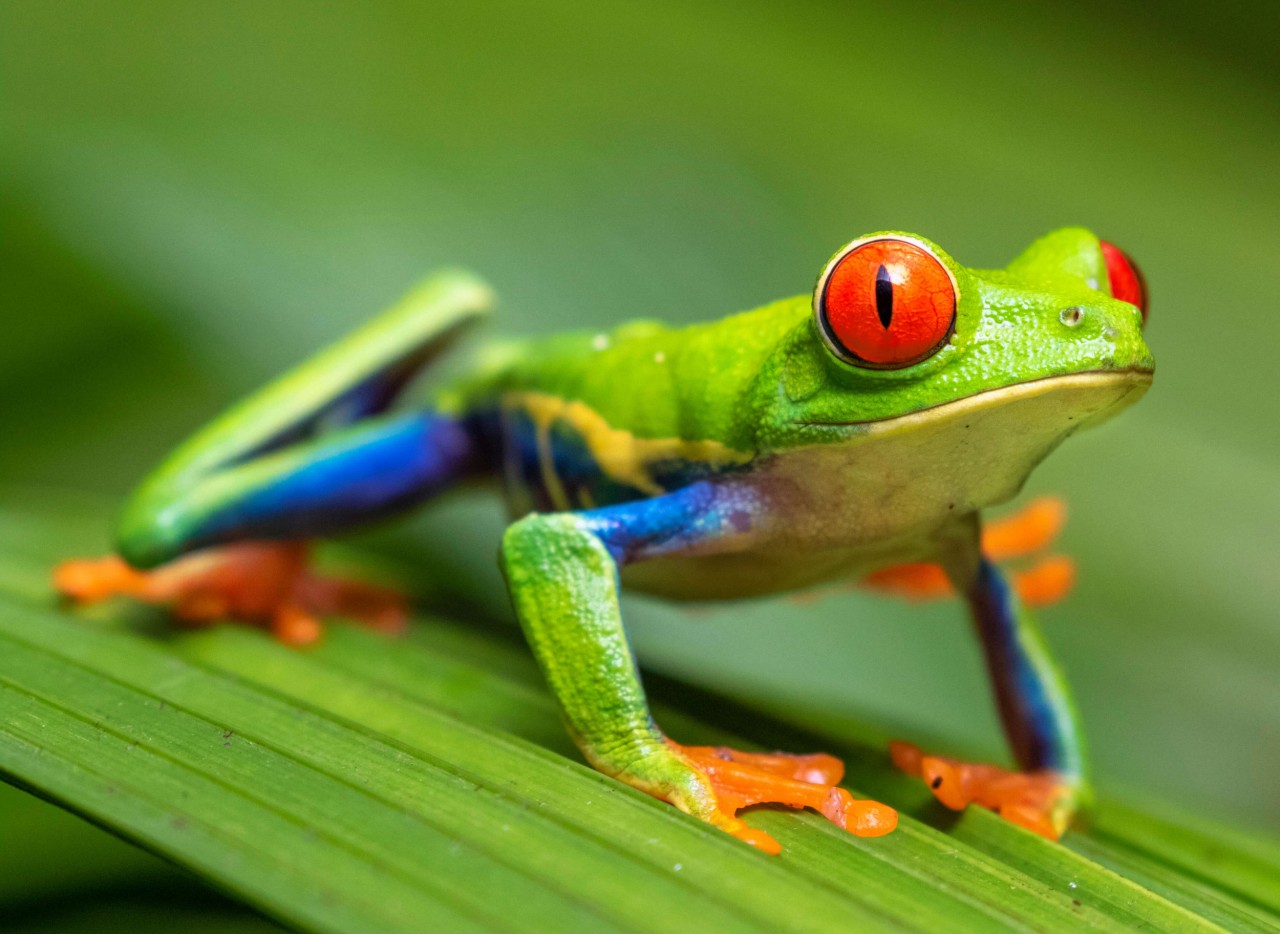
Full in isopod flow
But all isopods have one thing in common: Without sufficient air humidity, with which they always moisten their gill compartments, they dry out quite quickly. Therefore, unexpected new colonies in the domestic areas are rather not to be feared, if individual animals have accidentally escaped and gone on a wandering.
Even in the sexes, the isopods can be visually distinguished: the females carry a brood sac under their abdomen, the so-called marsupium. However, if one compares, for example, animals of the Porcellio species, in the case of two specimens of the same size next to each other, those with the more pronounced "tail end" indicate a male. On average, isopods reach an age of about 2 years.
In a plastic box with a tightly closing lid isopods can be kept and cared for wonderfully and also bred up to a certain point. At the beginning it is worthwhile to start with a smaller box and to change to a larger one as the isopod population increases. Especially in the beginning a breeding starts much faster if the animals do not have to travel long distances to find each other or their food. It is advantageous to put a gauze in the lid of the box, so that a gas escape is guaranteed, otherwise the isopods can suffocate.
As soil dwellers, they prefer a soil substrate that consists of about one-third of Humus and two thirds deciduous forest humus. Conifers of all varieties are rather unsuitable in the box. Intermixed charcoal, in fragments or pulverized, has the positive side effect of counteracting mold growth. Incorporated Moss also serves as a water reservoir, foliage and whitewood as further fodder, but also as a retreat. Since especially the constant maintenance of moisture is enormously important, the substrate should not be less than 5-8 cm in height to store it well. To better control the moisture content, it is convenient to water a certain corner and control it until the water is completely evaporated, this can be about once or twice a week. An external heat source in the form of a heating mat, for example, is only necessary if the animals' ideal breeding and comfort temperature cannot be kept constant, but this is rare to non-existent with "standard" terrestrial isopods, which can be kept and reproduced at room temperature without any problems. Heating mats should only be placed on the sides of the box and not underneath, otherwise the substrate would dry out too quickly and the animals would die. Lighting is not really necessary for isopod breeding, rather it is used for optimal viewing of the animals. When selecting a light source, however, care should be taken that it is not a heating lamp, which would unnecessarily heat up and dry out the box.
Feeding isopods
Woodlice should be permanently "wellfed"- besides regular gifts of various Foliage leaves and woods, they can also be optimally fed with various vegetables that accumulate in the kitchen. These include potatoes and sweet potatoes, but also lettuce, cabbage, zucchini, cucumber and others. Practical are also our chips varieties, which can be wonderfully dosed thanks to their practical size. Likewise, the isopods like to nibble fish food flakes, food sticks, but also smaller worms in places. Larger isopod species sometimes even drag the sticks into their hiding place to eat them with relish in peace.
All isopod species are basically dependent on a very good source of calcium, otherwise they quickly become predatory and can eat both their own deceased conspecifics, but also their young. Therefore, they should constantly be offered a good mineral preparation, such as our Crustarocks or also cuttlebone should be offered to them.
If isopods are kept as a cleaning crew in the terrarium, they will find something to eat all the time, but occasionally you should give them an extra portion of leaves and wood. Also, their own population is constantly kept in check by their amphibian or reptilian housemates, so overpopulation is not to be expected.
Problems in an isopod box really only occur when the soil substrate lacks certain characteristics, such as sufficient foliage or dead wood, water, the isopods are fed too few proteins or minerals, or there is simply too high a population. In these cases, the animals may tend to cannibalism, stop reproducing, or simply die in unusually high numbers.
Last but not least
Also in terraristics applies: "you are what you eat"- and especially by the controlled feeding of the land isles it is therefore possible to prepare them accordingly high-quality, so that also our beloved reptiles are optimally supplied with everything necessary. The very simple and space-saving keeping of the isopods without significant odor development, their small size and enormous reproduction rate makes them thus an optimal live food, which can be bred very easily even by beginners without much scientific background. The possibility of color breeding allows great experiments on these absolutely fascinating creepy crawlies. They are also wonderfully suitable as a pontoon to the chemistry set for children with pet allergies, who are unfortunately more and more common nowadays, and whose urge to explore and discover will be perfectly satisfied with this perhaps rather unusual pet.

